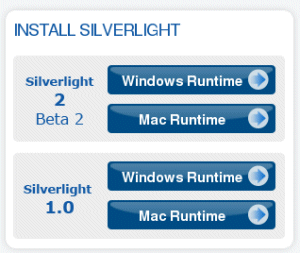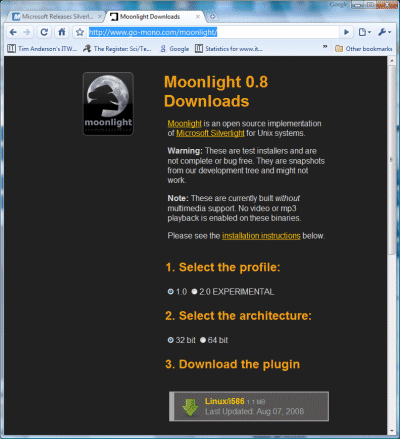Moving from Microsoft’s PDC last week to Dreamforce (the Salesforce.com conference) this week has been an interesting experience. Microsoft is the giant still trying to come to terms with the new world of the Internet; Salesforce.com is the young upstart convinced that it has the future computing platform in its grasp. Salesforce.com is a much smaller company – revenue of just over $1 billion versus Microsoft’s $60 billion – though oddly Dreamforce is a larger conference, with nearly 10,000 attending, compared to 6,500 at PDC (numbers very approximate). Being small means greater opportunity for growth, and Salesforce.com reported 49% year on year revenue growth in the last quarter for which figures are available [PDF], ended July 2008.
As for the actual conference, Monday was great, with an upbeat keynote and a fascinating press Q&A with CEO Marc Benioff; Tuesday failed to sustain the momentum with a disappointing keynote (people were leaving in droves as Michael Dell attempted to pitch storage servers to this on-demand crowd), and today is wind-down day.
The press Q&A covered most of the interesting questions about this company. Is it a lock-in? Will it move beyond CRM to a total cloud platform? Will it be bought by Oracle? How is the Salesforce.com platform (called Force.com) different from Microsoft’s Azure? Benioff has a great talent for sound bytes, and made endless digs at Microsoft and its new platform which he called “Azoon”. Microsoft developers are in a black room, he said, but walking out into the bright light of cloud computing – by which he means not Azure, but his stuff, naturally.
I got to ask the lock-in question. Benioff had already observed that making the platform programmable increased his hold on this customers. “It’s exactly the same thing that happened when Oracle moved from version 5 to version 6 with PL/SQL,” he said. “The database became programmable. Customers became customers for life.” Incidentally, Benioff talks a lot about Oracle, which is the database on which Salesforce.com itself runs, and refers to Larry Ellison as his mentor. I asked whether he was now asking his customers to repeat the mistakes of the past, when they locked themselves to Oracle or Microsoft or IBM, and I am going to quote his answer nearly in full:
It’s not a question of repeating the past, it’s just an aspect of our industry that it’s important for vendors to offer customers solutions that give them the ability to fully integrate with the platform. It benefits the customer and it benefits the vendor, and every major vendor has done it. That’s really the power.
I think that it’s true whether you’re writing with Google today and you’re building on the Google AdWords and AppEngine, you have to make the choice as the developer, what’s the right thing? Portability of code is just not something that we have ever got to in our industry. As a developer you want to make the right choice … but the reality is that the customers who are doing deep integration with us, those are customers who are going to be with us for a long time and we’re a strategic solution to them.
It’s not a commodity product. It never has been. If you think of it as a commodity product it’s a mistake … I’m completely honest and open about it, which is you’re making a strategic relationship decision, and you need to look at your vendor deeply, and choose what is the right thing for you. When customers bought Sybase SQL and they wrote Transact SQL, or they bought Oracle and wrote PL/SQL, or they’re writing in Visual Studio, well Visual Studio does not port over to HTML. You’re making a strategic decision …I think that’s important, that you research everything, evaluate everything … you do as a vendor end up with a very loyal customer base over time.
Are you familiar with the iPhone? [sure] So iPhone has a development environment that’s called Cocoa. So you have all these apps now on AppStore, which is a name that we used to have and we’ve given it to them, so when you write on AppStore, when you write on Cocoa, guess what, those apps are in Cocoa. And there’s nothing wrong with that.
I followed up by asking whether Sun’s Java experiment, including the idea of code portability between vendors, was an impossible dream.
If you’re writing in Java, you’re betting on Java. It’s a totally reasonable decision. You make that choice. It’s not portable away from Java, that I know of. I just think it’s an aspect of our industry. You should not avoid it, and vendors should not say something like, oh, we’re gonna offer some level of portability, just be honest about what our strategies are. When you’re writing on SQL Server, when you’re writing on Visual Studio, when you’re writing on Oracle, when you’re writing on DB2, when you’re writing on Force.com, you’re gonna be writing natively to a platform, and then the more open that platform is, the more connections there are to that platform, the more powerful that is for you. But you are making a platform decision, and our job is to make sure you choose our platform and not another platform, because once they have chosen another platform, getting them off it is usually impossible.
I give him credit: he could not be more clear. Even so, if you follow his reasoning, developers have an impossible decision at this point of inflexion in the industry. It is all very well researching Salesforce.com, or other vendors, but we cannot know the future. For example, Salesforce.com may become Oracle (an outcome that analysts I spoke to here see as very plausible), in which case you researched the wrong company.
On balance I doubt that the Force.com platform will go away, but its future cost and evolution is all a matter for speculation. That said, I do think it is an interesting platform and will be posting again about it; I’ve also made some comments on Twitter which you can find on my page there.


